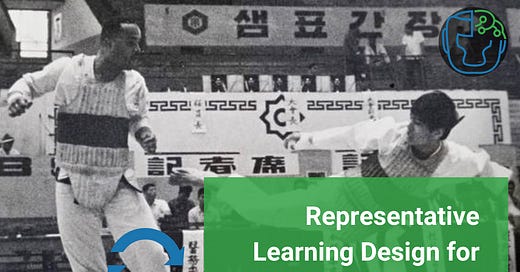Representative Learning Design for Martial Arts Training
Exploring available RLD instruments and how RLD applies specifically to martial arts/combat sports. Part 2 of 2.
In part one, I overviewed representative learning design (RLD), and why it’s important for martial artists.
In this article, I’ll review the available RLD instruments, and how they might be used for combat sports.
Then, I’ll develop a line of thinking about how we generally ought to understand RLD’s application to martial arts training.
In this article, I introduce a new tool: the Combative Action Fidelity Index.
Currently Available RLD Instruments
Broadly speaking, there are three tools out of the scientific literature available for assessing the level of representative learning design of a given practice task in sports.
Two are easy to use, if you have time, and one is skill/resources prohibitive for regular coaches.
RPAT
Rule Induction Framework
The Representative Dial
We’ll explore them a little more in the following sections.



